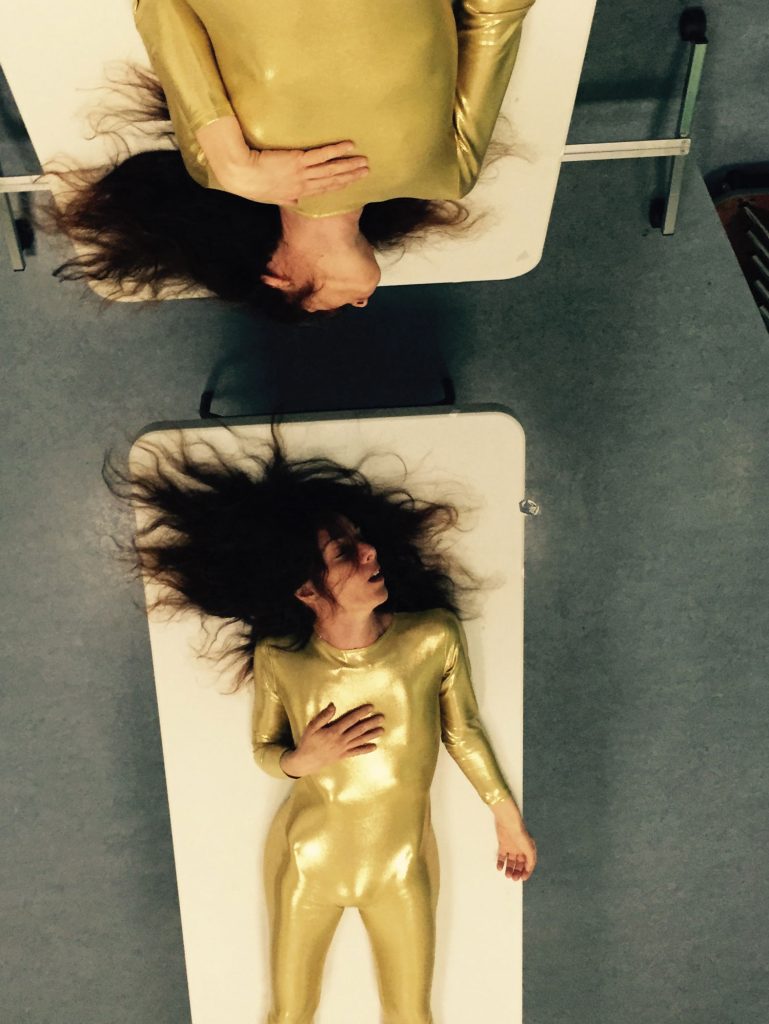Keely Garfield is a dancer and choreographer whose dances are a lot like life itself, with unexpected moments of strange, emotional beauty, abrupt transitions, awkward interactions, snippets of music, and lots of costume changes. They do not look like ballet (not at all, though she does use some ballet conventions, if only to puncture them); to her credit, her dances don’t look like anyone’s work but her own.
Her work has never fit neatly into a category: it is postmodern dance, but it’s driven by music and emotions, not just concepts and ideas. She is not loyal to any predecessor, role model, or dance style, and each of her works explores new territory. The dances are not easily described because they contain and manipulate so many influences, from vaudeville comedy routines to popular music and hip-hop.
This wide-openness to materials is part of her creative process, which time and again over her 30-year career has resulted in dances that are widely praised for their astonishing power and unpredictability. Now working with a small, rotating group of dancers and musicians, Garfield is creating work that’s increasingly informed by her meditation practice and her experiences as a yoga teacher, hospice caregiver, and Urban Zen integrative therapist, which combines yoga therapy, breath awareness, Reiki, aromatherapy, and meditation. A member of the Village Zendo in New York City, she completed jukai [receiving of the precepts] with the Zendo’s abbot, Roshi Pat Enkyo O’Hara.
“There are so many things I’ve learned at the zendo from teachers and practitioners that really opened my eyes,” Garfield said. “Much of my life, especially my work, is about being gregarious and colorful, wild and out there and free, but I’m grateful to have recognized that I need something plainer, simpler, in my life. . . . I certainly know how to get naked and swing from the chandelier and be the life and soul of the party. What I don’t know so well is how to sit still and shut the fuck up. So I’m finding out.”
Keely’s latest dance work, presented at the Brooklyn performance space Roulette in June, is called Pow, not to be confused with Wow, the piece last year the New York Times called “bizarre, hilarious, enthralling, confounding, and cathartic.” Pow, Keely said, is “a Frankenstein of a dance in which elements of other dances I have made are radically reconfigured, sutured, and amplified.” The piece, like much of Garfield’s work, also has a hard-edged, agonistic aspect that seems to represent an existential struggle: against habitual prejudice and inequality, or against patriarchal capitalistic heteronormativity—or something else. There’s a lot going on, even in the simplest dance gestures. “It is definitely informed by one of the koans in the Blue Cliff Record where the student asks, ‘How is it when the tree withers and the leaves fall?’ and the master replies, ‘Body exposed in the golden wind,’” Garfield explained. “I like to think that my dancing body is always exposed to the golden wind, which means there’s no protection.”
Watch Keely Garfield perform in Pow.
Thank you for subscribing to Tricycle! As a nonprofit, we depend on readers like you to keep Buddhist teachings and practices widely available.
